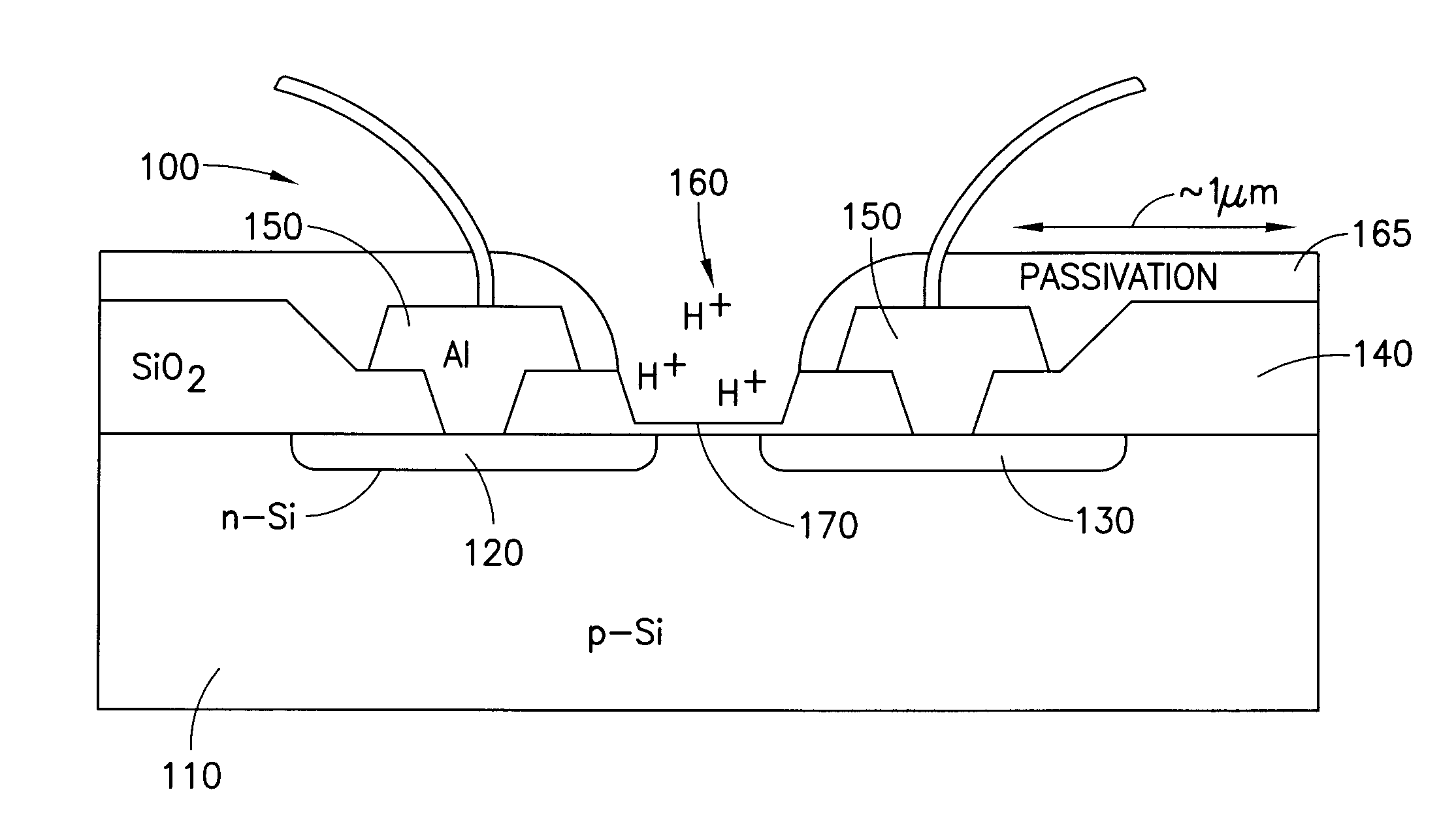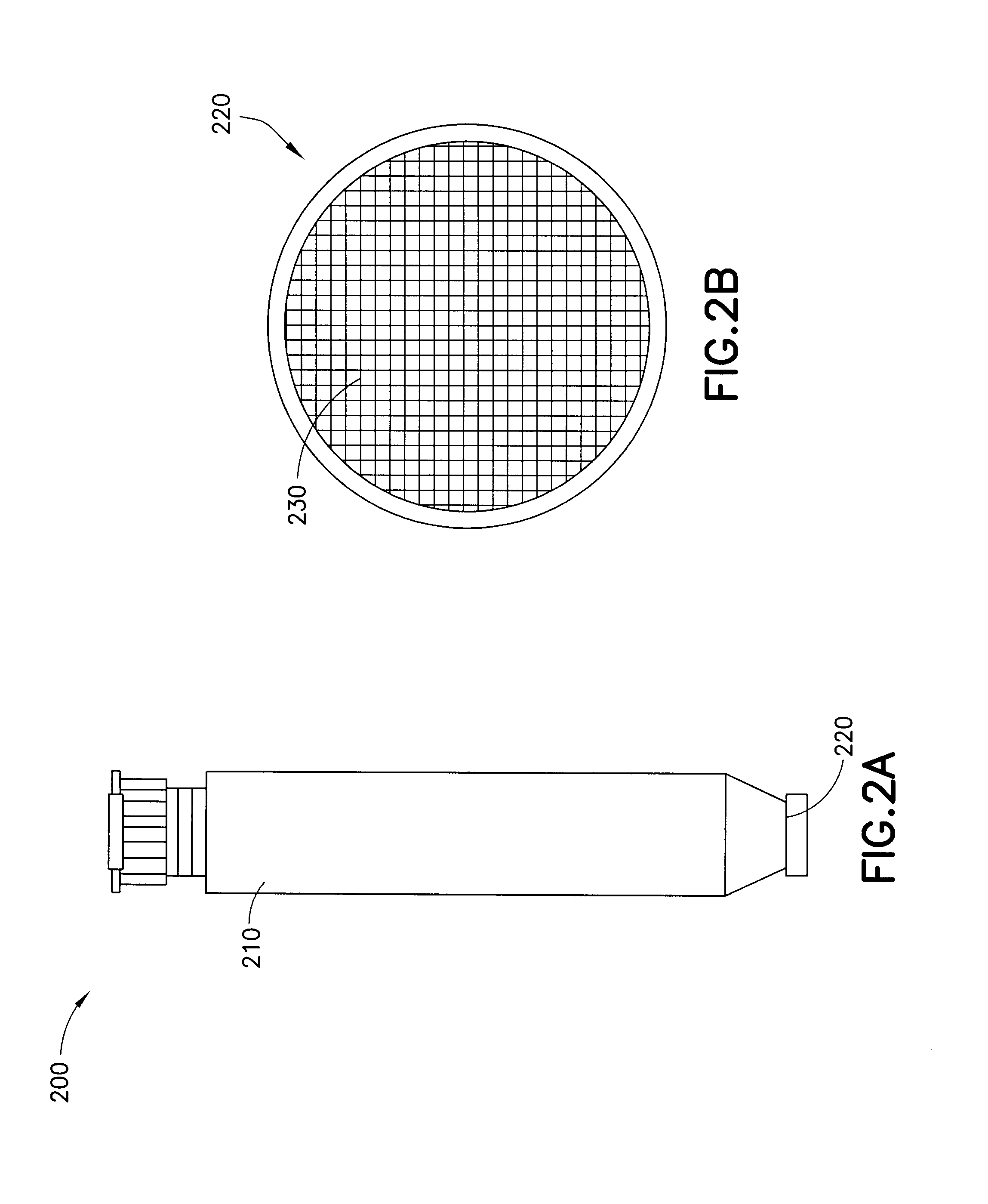Methods and apparatus for rapid detection of infectious microorgranisms
a technology of infectious microorganisms and detection methods, applied in the field of methods and apparatus for rapid detection of infectious microorganisms, can solve the problems of significant healthcare issue of sepsis and patient death, and achieve the effect of rapid detection
- Summary
- Abstract
- Description
- Claims
- Application Information
AI Technical Summary
Benefits of technology
Problems solved by technology
Method used
Image
Examples
Embodiment Construction
[0019]Arrays of miniaturized chambers with individual ion sensitive field effect transistors (ISFET) are used to determine the presence or absence of even a single microorganism in the sample. The ISFETS are positioned in chambers adapted to receive sample that may contain on or more microorganisms. The ISFET is positioned in the chamber. In certain embodiments, the ISFET is positioned at the bottom of the chamber. In one embodiment, the apparatus is comprised of an array with 5,000 to 10,000 chambers. The array may include as few as 100 chambers or less, or as many as 10,000,000 chambers or more. The array can be of single or multi-row arrangement. As noted above, each chamber in the array includes an individual ISFET, for example, disposed at the bottom of the chamber. In another embodiment, the apparatus is comprised of a two-dimensional array with up to 10,000 rows and 10,000 columns of chambers, each with an individual ISFET, for example built underneath the chambers, preferabl...
PUM
 Login to View More
Login to View More Abstract
Description
Claims
Application Information
 Login to View More
Login to View More - R&D
- Intellectual Property
- Life Sciences
- Materials
- Tech Scout
- Unparalleled Data Quality
- Higher Quality Content
- 60% Fewer Hallucinations
Browse by: Latest US Patents, China's latest patents, Technical Efficacy Thesaurus, Application Domain, Technology Topic, Popular Technical Reports.
© 2025 PatSnap. All rights reserved.Legal|Privacy policy|Modern Slavery Act Transparency Statement|Sitemap|About US| Contact US: help@patsnap.com



